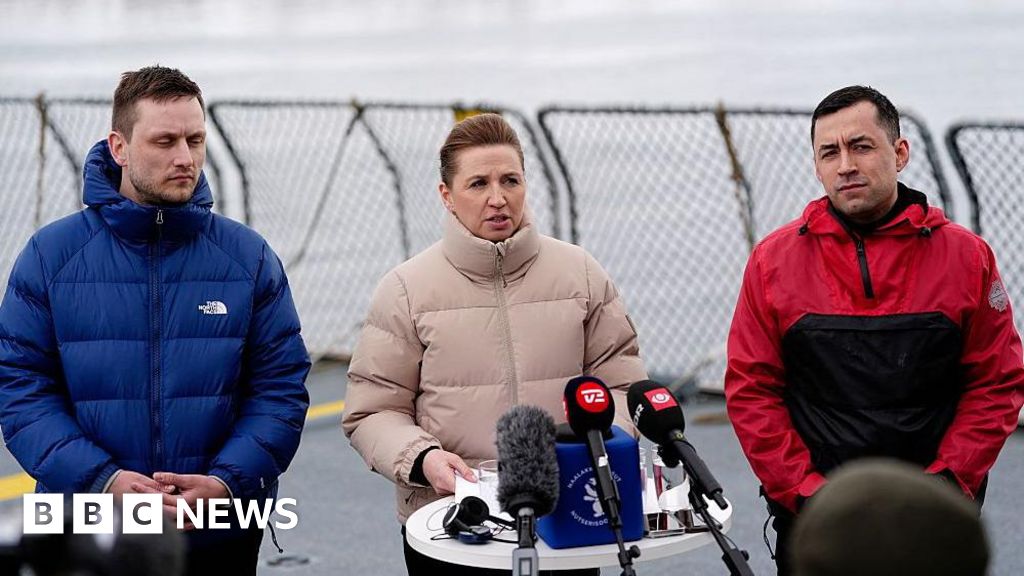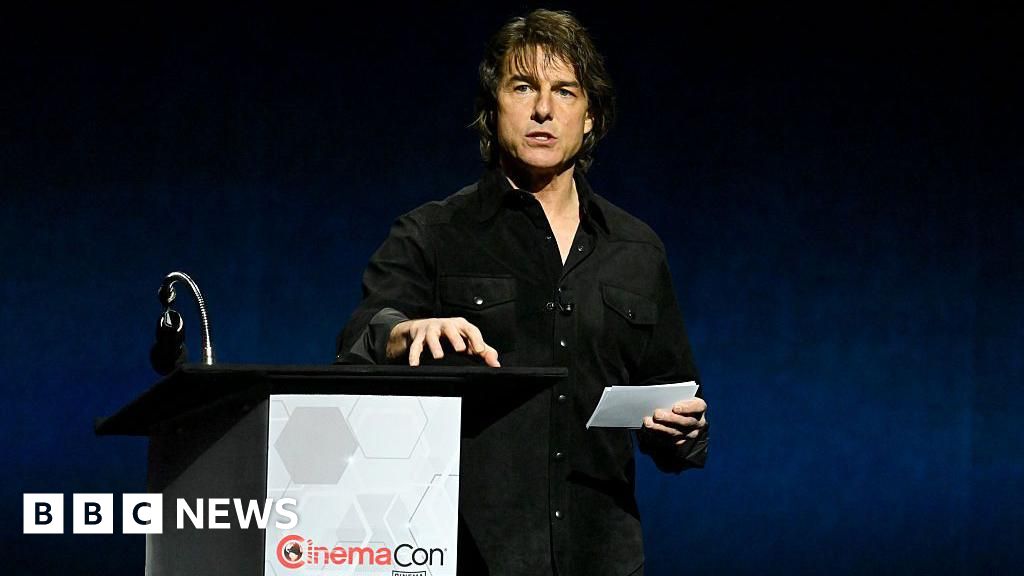ARTICLE AD BOX
By Joshua Nevett
BBC News
image source, Getty Images
image captionThe hunting of whales is a traditional practice in the Faroe Islands (file image)The practice of dolphin hunting in the Faroe Islands has come under scrutiny after more than 1,400 of the mammals were killed in what was believed to be a record catch.
The pod of white-sided dolphins was driven into the largest fjord in the North Atlantic territory on Sunday.
Boats herded them into shallow waters at Skalabotnur beach in Eysturoy, where they were killed with knives.
The carcases were pulled ashore and distributed to locals for consumption.
Warning: This article contains graphic details and images some may find distressing.
Footage of the hunt shows dolphins thrashing around in waters turned red with blood as thousands of people watch on from the beach.
Known as the grind (or Grindadrap in Faroese), the hunting of sea mammals - primarily whales - is a tradition that has been practised for hundreds of years on the remote Faroe Islands.
The Faroese government says about 600 pilot whales are caught every year on average. White-sided dolphins are caught in lower numbers, such as 35 in 2020 and 10 in 2019.
Supporters say whaling is a sustainable way of gathering food from nature and an important part of their cultural identity. Animal rights activists have long disagreed, deeming the slaughter cruel and unnecessary.
Sunday's hunt was no different, as international conservation groups rounded on the hunters to condemn the killing.
But the scale of the killing at Skalabotnur beach has shocked many locals and even drawn criticism from groups involved in the practice.
Bjarni Mikkelsen, a marine biologist from the Faroe Islands, put the reported death toll into perspective.
He said records showed that this was the largest number of dolphins ever killed on one day in the Faroe Islands, a autonomous territory of Denmark.
He said the previous record was 1,200 in 1940. The next-largest catches were 900 in 1879, 856 in 1873, and 854 in 1938, Mr Mikkelsen said.
On Sunday night a super-pod of 1428 Atlantic White-Sided Dolphins was driven for many hours and for around 45 km by speed boats and jet-skis into the shallow water at Skálabotnur beach in the Danish Faroe Islands, where every single one of them was killed. https://t.co/uo2fAPhCDq
— Sea Shepherd (@seashepherd) September 14, 2021The BBC is not responsible for the content of external sites.View original tweet on Twitter
In an interview with the BBC, the chairman of the Faroese Whalers Association, Olavur Sjurdarberg, acknowledged that killing was excessive.
Why were that many dolphins killed, then?
'People are in shock'
"It was a big mistake," said Mr Sjurdarberg, who did not participate in the hunt. "When the pod was found, they estimated it to be only 200 dolphins."
Only when the killing process started did they find out the true size of the pod, he said.
"Somebody should have known better," he said. "Most people are in shock about what happened."
Even so, according to Mr Sjurdarberg, the catch was approved by the local authorities and no laws were broken.
Such hunts are regulated in the Faroe Islands. They are non-commercial and are organised on a community level, often spontaneously when someone spots a pod of the mammals.
To take part, hunters must have an official training certificate that qualifies them to kill the animals.
'Legal but not popular'
Killing white-sided dolphins is "legal but it's not popular", said Sjurdur Skaale, a Danish MP for the Faroe Islands.
He visited Skalabotnur beach to speak to locals on Monday. "People were furious," he said.
Still, he defended the hunt, which he said was "humane" if done in the right way.
That involves a specially designed lance, which is used to cut the spinal cord of the whale or dolphin before the neck is cut.
Using this method, it should take "less than a second to kill a whale", Mr Skaale said.
image source, Getty Images
image captionWhale hunts - such as the one pictured here in Torshavn in 2019 - are organised by communities"From an animal welfare point of view, it's a good way of killing meat - far better than keeping cows and pigs imprisoned," he said.
Campaign group Sea Shepherd has disputed this, arguing that "the killing of the dolphins and pilot whales is rarely as quick as Faroese government" makes out.
"Grindadrap hunts can turn into drawn-out, often disorganised massacres," the group says.
"The pilot whales and dolphins can be killed over long periods in front of their relatives while beached on sand, rocks or just struggling in shallow water."
Braced for 'a big backlash'
Surveys suggest that most people are opposed to the mass slaughter of dolphins in the Faroe Islands.
On Sunday, the national reaction was "one of bewilderment and shock because of the extraordinarily big number", said Trondur Olsen, a journalist for Faroese public broadcaster Kringvarp Foroya.
"We did a quick poll yesterday asking whether we should continue to kill these dolphins. Just over 50% said no, and just over 30% said yes," he said.
In contrast, he said, a separate poll suggested that 80% said they wanted to continue with the killing of pilot whales.
The polls provide a snapshot of public opinion towards the killing of sea mammals.
image source, Getty Images
image captionAnimal rights activists have long criticised whaling in the Faroe Islands (file image)Criticism of the Faroese hunt has ebbed and flowed over the years. The hunt is brought to wider attention from time to time, as it was by the popular Seaspiracy documentary on Netflix earlier this year.
This time, though, locals say the reaction - especially within the whaling community - has been unusually damning.
"There's been a lot of international attention. My suspicion is that people are bracing themselves for a big backlash," Olsen said.
"This is a good time for campaigners to put even more pressure on. It will be different this time because the numbers are very big."

 3 years ago
58
3 years ago
58









 English (US) ·
English (US) ·